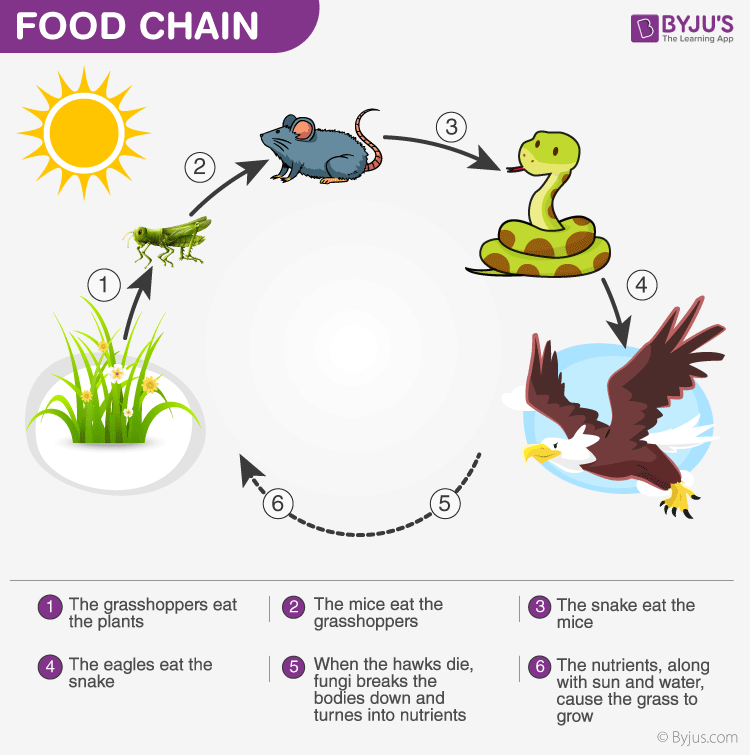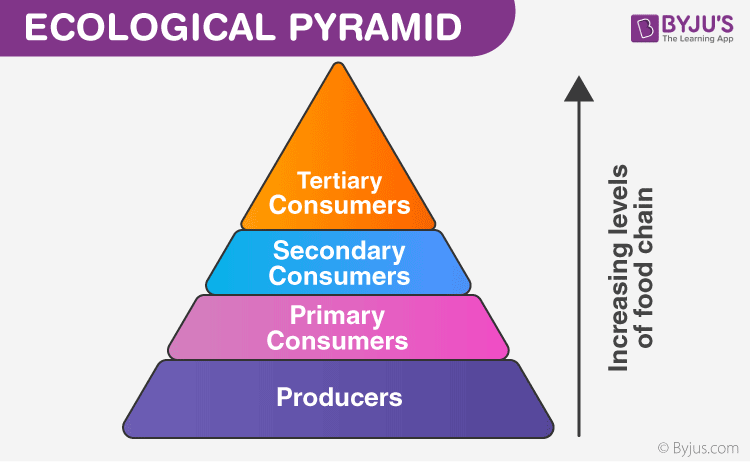All processes in this world, whether living or non-living, need energy. Living organisms are capable of producing energy or getting it through predation. They need this energy to maintain cells and tissues. It is also required for supporting voluntary and involuntary actions of the human body and other multiple processes within the body like reproduction, cell division, metabolism, digestion, circulation, excretion, and much more.
The ultimate source of energy on Earth is the Sun. No energy can be produced without the sun. All living beings, especially plants capture solar energy and utilise it for their food production. This process is called photosynthesis.
What is Food Web?
There are unique interactions and relationships which are involved in the transportation of energy. The energy, once produced and captured, is distributed throughout the various living organisms. This transfer of energy is termed as the food web.
What is the Food Chain?
A food chain is a network of links in a food web. Here, the producers are consumed by the predators-primary and secondary consumers and then the detritivores and finally by decomposers. When many such individual food chains occur in an ecosystem, it is known as Food Web.
A food chain shows a direct transfer of energy between organisms. As every organism can feed on multiple things, a food web is a much more realistic and simplified method of transferring energy in an ecosystem.
Both food chains and food webs are similar to each other, but they are not the same. We will explore the differences here.
A food chain presents a unique, connected path of energy flow in an ecosystem, whereas the food web explains how food chains overlap. Both food chains and food webs, shares three types of organisms in a food chain: producers, consumers and decomposers.

Explore more: Difference Between Food Chain And Food Web
Producers
Organisms that can synthesize their own food and usually serve as the foundation for all food chains. For example – plants, algae and few species of bacteria. They prepare their own food by converting sunlight into chemical energy and this process is called photosynthesis. They use energy from the sunlight for converting carbon dioxide into simple glucose which is easily broken down to produce energy. This energy is then stored in the form of sugars for later use.
The simple diagram of the Ecological Pyramid Food Web and Food Chain is shown below.

Primary Consumers
They are also called herbivores animals who eat producers or plants. Sometimes, these primary consumers become prey for other animals that sit higher on the food chain. Some of the primary consumers or herbivores living on the land are chipmunks, mice, horses, birds, deer and some insects. Fish, zooplankton, snails, sea urchins are a few marine primary consumers.
10 Percent Energy Rule
Even though primary consumers feed on producers, they are still getting their energy from the sun. The primary consumers feed on plants and break down the food particles to release the energy.
Primary consumers do not get 100% of the sun’s energy from the producers or the plants on which they feed. This is because only some amount of the sun’s energy is utilised by the plant to synthesise their food.
In fact, they only get 10% of the energy. This is termed as the 10% Rule, which states that only 10 per cent of the energy available gets passed onto the next level of consumers.
Secondary Consumers
These are animals who feed on primary consumers. They usually eat meat and are termed as predators. Lion, hawks, snakes, coyotes, wolves, and spiders are a few terrestrial secondary consumers.
Tertiary Consumers
They are the ones who feed on secondary consumers. They are thus called the top predators. They are also termed as apex predators and have no natural enemies. Naturally, you would assume that humans are at the top of the food chain, but they are not.
Why are Humans not at the top of the food chain?
Scientists categorize the organisms on the food chain by trophic levels. A “Trophic level” means how far an organism is from the start (level 1) of the food chain.
Predators that use a top-down control on organisms in their community are often considered keystone species. Humans are not considered apex predators because their diets are typically different, although human trophic levels increase with the consumption of meat.
For instance, plants are considered to be at trophic level 1, and the apex predators are usually placed at level 4 or 5. According to scientists, humans are placed on a trophic level of 2.21.
For more detailed information about the food web, food chain, or any other related topics, explore at BYJU’S Biology.

Good teacher teach here
Great lessons really learned a lot
I’m curious if the “10 percent rule” applies not only to energy, but also to mass. Does grass support only 10 percent its mass in cows?
V. Good a website and iam so happy because any questions and answers post in a website